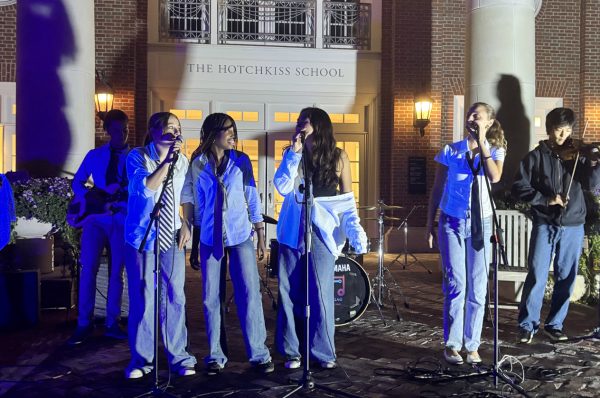School Moves Towards Carbon Neutrality
Despite necessary preoccupation with the COVID-19 pandemic, climate change concerns are still being addressed on campus.
As the United Nations Climate Change Conference, also known as COP26, renewed international climate agreements, many academic institutions are also committing to plans to reduce their carbon footprint. Thirteen years ago, the school began adopting initiatives to reduce its carbon footprint, ranging from serving locally grown food in the Dining Hall to implementing renewable energy sources such as the field of solar panels and the wood burning biomass plant.
Environmental stewardship is one major value of the school. Mr. Josh Hahn, assistant head of school and director of strategic initiatives, strives to embody that in the school’s operations. He said, “We want to create an experience on campus where the school takes on the same environmental issues the students take on in the classroom.” Curricula such as the Fairfield Farm Ecological Adventure Team (FFEAT), environmental science classes like agroecology, forest ecology, limnology, and the food systems class, engage students with issues of land, energy, and water relevant to the community and the larger world. To help engage the entire student body in sustainability discussions, this year’s all-school read was Robin Wall Kimmerer’s Braiding Sweetgrass, a nonfiction novel about the intersections of indigenous wisdom, scientific knowledge, and the teachings of plants.
Mr. Mike Webster, general manager of Dining Services, Ms. Bridget Lawrence-Meigs, farm manager, and Ms. Amy Sidran, farm education coordinator, work together to provide a more environmentally sustainable food supply. Dining Services prioritizes working with family and local farms rather than large food distributors to provide sustainably grown, organic food for the community. The Fairfield Farm supplements the food supply with a large potato crop, seasonal vegetables and lettuce mix; it also employs sustainable farming practices such as the use of organic pesticides.
Since 2018, the school has reduced its carbon footprint by about 40%. This reduction has been achieved by purchasing 25% of the school’s energy through wind power and 95% of heat and hot water from the wood-chip powered biomass facility. The Music Wing, the Bissell common dormitories, and Monahan are all Leadership in Energy and Environmental Design (LEED) approved buildings, which means they curb water usage and energy consumption. Once the administration determines the exact amount of carbon the school emits, they plan to create a roadmap to bring those numbers to zero. Mr. Hahn said, “Reducing the next 60% will be more difficult because we’ve already taken the [more obvious] initiatives, [such as the new motion sensored lights] .” Reducing this 60% will mostly involve decreasing electricity use.”
The school’s next step towards achieving carbon neutrality is to “offset” their carbon emissions by supporting local organizations that plant trees and finding a farm to accept its food waste as compost, rather than discarding it.
Mr. Webster and Mr. Hahn both expressed the need to increase student involvement with the school’s carbon-zero objective. Eliza Ross ’22, head of Students for Environmental Action (SEA), said, “The student body doesn’t know what the school does behind the scenes to reduce its carbon footprint. There are opportunities to learn about these initiatives, by taking environmental science classes, going to SEA meetings, and reading SEA’s Newsletter, Blue and Green”
On Friday, December 10, SEA will hold a meeting with Mr. Webster about the school’s sustainability initiatives as well as the Dining Hall’s commitment to environmental stewardship.




